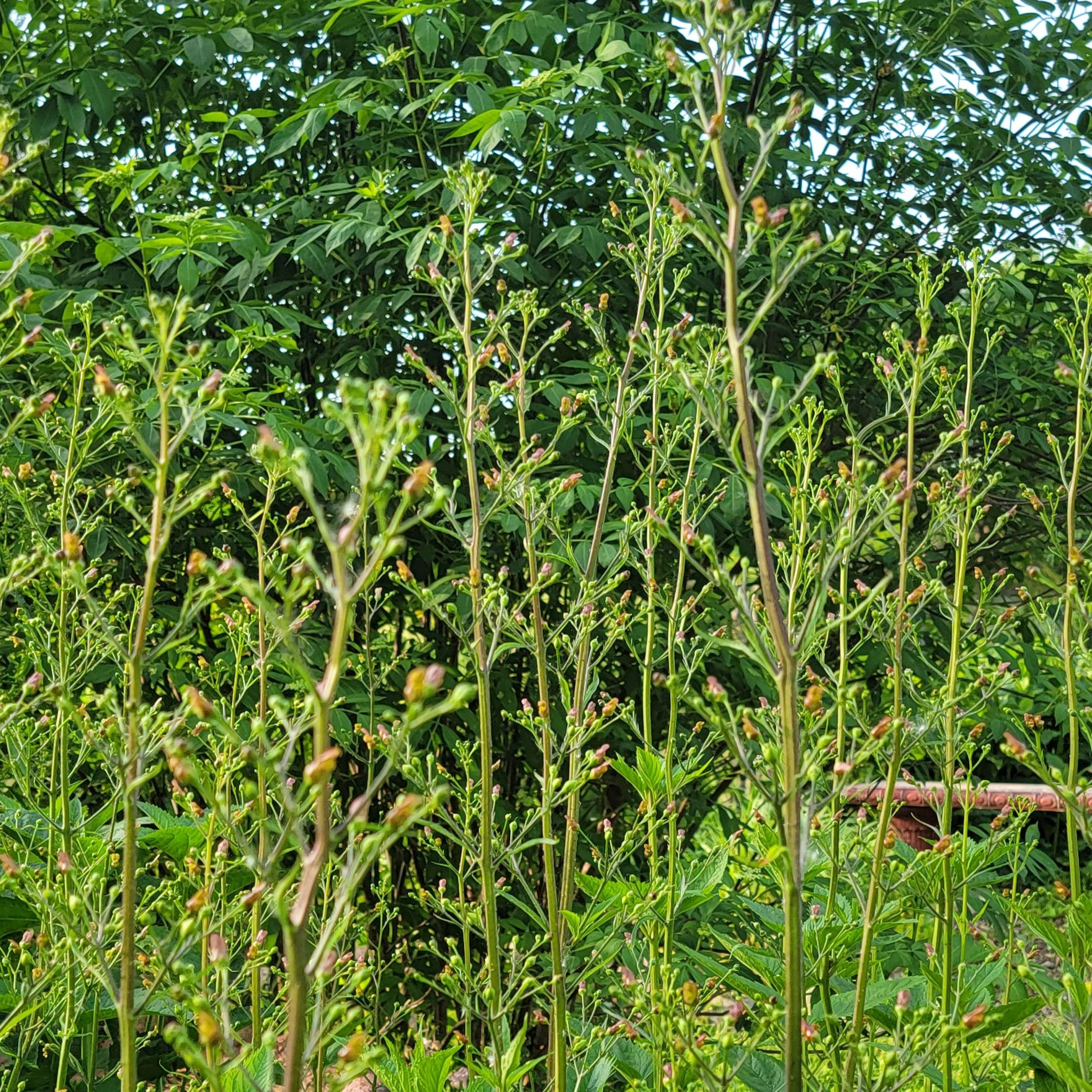 Image 1 of 8
Image 1 of 8

 Image 2 of 8
Image 2 of 8

 Image 3 of 8
Image 3 of 8

 Image 4 of 8
Image 4 of 8

 Image 5 of 8
Image 5 of 8

 Image 6 of 8
Image 6 of 8

 Image 7 of 8
Image 7 of 8

 Image 8 of 8
Image 8 of 8









Scrophularia lanceolata, Early Figwort Quart pot
Scrophularia lanceolata, Early Figwort
PS, Zone 4, PS to Shade, Avg soil, medium wet to medium dry, blooms May - July, 5’ x 2-3’.
Figworts are nectar-rich plants. Perhaps they’re not known for their beauty, but they’re very abundant in nectar! One of the best species for attracting butterflies, bees, other insects and birds - especially the Ruby-throated Hummingbird! Not the most eye-catching plant, but certainly very interesting. There’s two types: an early and a late figwort. What’s fascinating is that both kinds of figworts are very sought after by insects because of their abundance of nectar, and as soon as the early figwort slows down, by God’s divine arrangement the late figwort kicks in. Their bloom times rarely overlap. In this way they provide nectar all season long! Being new to us, we grew both types from seed in 2019 and the Late figwort bloomed abundantly in the later part of the summer. We’re looking forward to seeing how the Early Figwort blooms this spring. Rarely available from nurseries, planting these fascinating figworts will surely bring joy and novelty to any native landscape.
Attracts a wide variety of native bees, honey bees, beetles, wasps, butterflies and flies. The Xerces Group says, “it literally drips with nectar,” and because of its early production of nectar, it’s a boon for the Ruby-Throated Hummingbird.
Scrophularia lanceolata, Early Figwort
PS, Zone 4, PS to Shade, Avg soil, medium wet to medium dry, blooms May - July, 5’ x 2-3’.
Figworts are nectar-rich plants. Perhaps they’re not known for their beauty, but they’re very abundant in nectar! One of the best species for attracting butterflies, bees, other insects and birds - especially the Ruby-throated Hummingbird! Not the most eye-catching plant, but certainly very interesting. There’s two types: an early and a late figwort. What’s fascinating is that both kinds of figworts are very sought after by insects because of their abundance of nectar, and as soon as the early figwort slows down, by God’s divine arrangement the late figwort kicks in. Their bloom times rarely overlap. In this way they provide nectar all season long! Being new to us, we grew both types from seed in 2019 and the Late figwort bloomed abundantly in the later part of the summer. We’re looking forward to seeing how the Early Figwort blooms this spring. Rarely available from nurseries, planting these fascinating figworts will surely bring joy and novelty to any native landscape.
Attracts a wide variety of native bees, honey bees, beetles, wasps, butterflies and flies. The Xerces Group says, “it literally drips with nectar,” and because of its early production of nectar, it’s a boon for the Ruby-Throated Hummingbird.
Scrophularia lanceolata, Early Figwort
PS, Zone 4, PS to Shade, Avg soil, medium wet to medium dry, blooms May - July, 5’ x 2-3’.
Figworts are nectar-rich plants. Perhaps they’re not known for their beauty, but they’re very abundant in nectar! One of the best species for attracting butterflies, bees, other insects and birds - especially the Ruby-throated Hummingbird! Not the most eye-catching plant, but certainly very interesting. There’s two types: an early and a late figwort. What’s fascinating is that both kinds of figworts are very sought after by insects because of their abundance of nectar, and as soon as the early figwort slows down, by God’s divine arrangement the late figwort kicks in. Their bloom times rarely overlap. In this way they provide nectar all season long! Being new to us, we grew both types from seed in 2019 and the Late figwort bloomed abundantly in the later part of the summer. We’re looking forward to seeing how the Early Figwort blooms this spring. Rarely available from nurseries, planting these fascinating figworts will surely bring joy and novelty to any native landscape.
Attracts a wide variety of native bees, honey bees, beetles, wasps, butterflies and flies. The Xerces Group says, “it literally drips with nectar,” and because of its early production of nectar, it’s a boon for the Ruby-Throated Hummingbird.